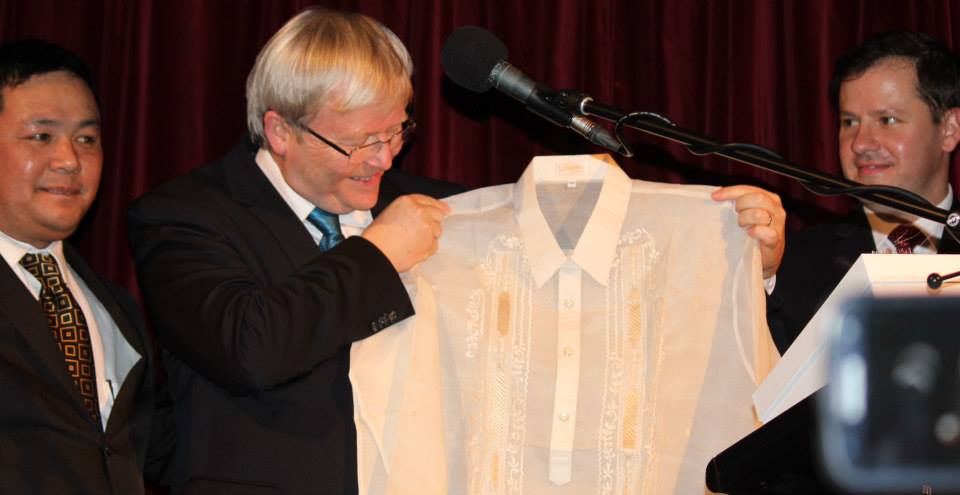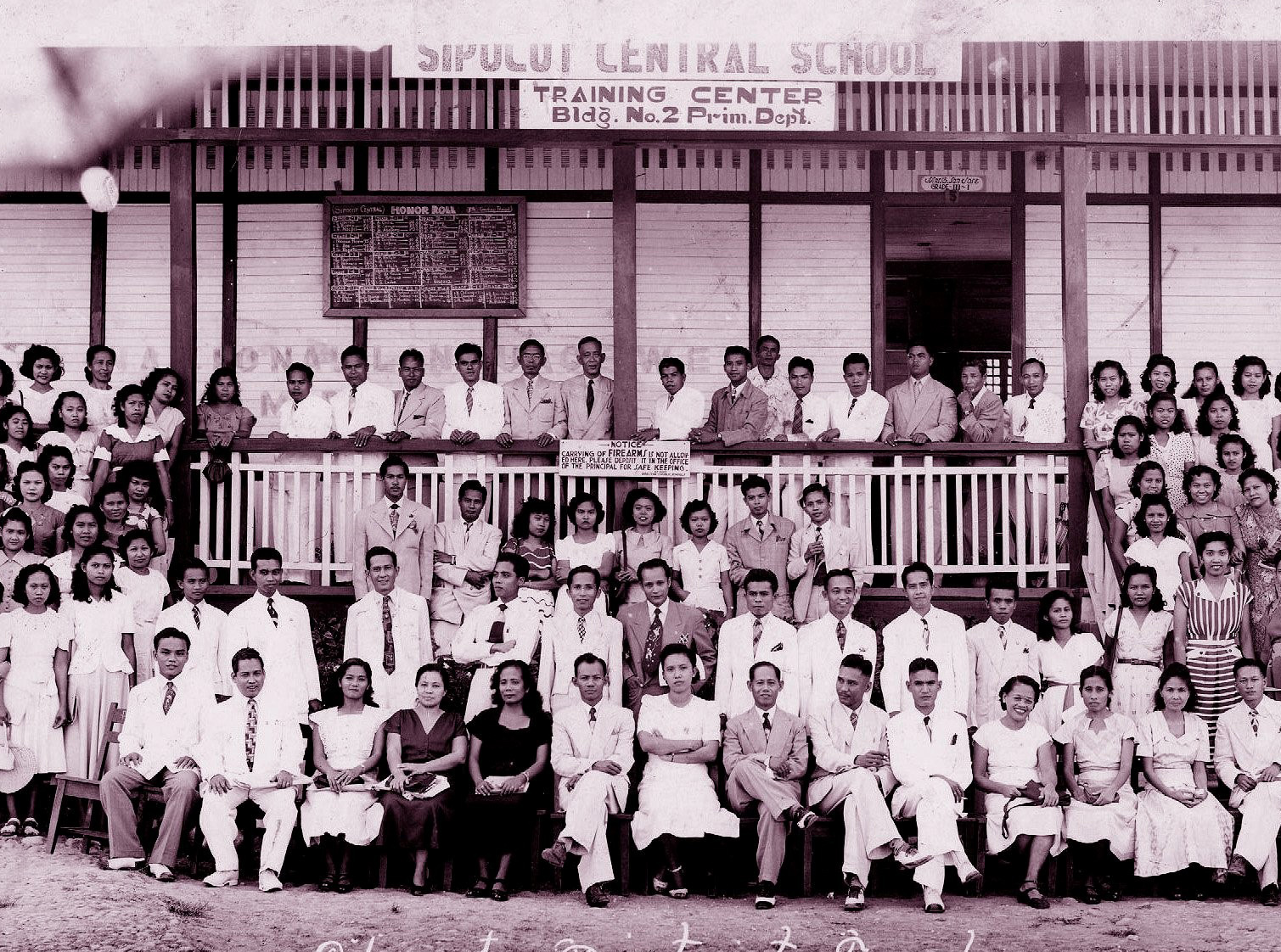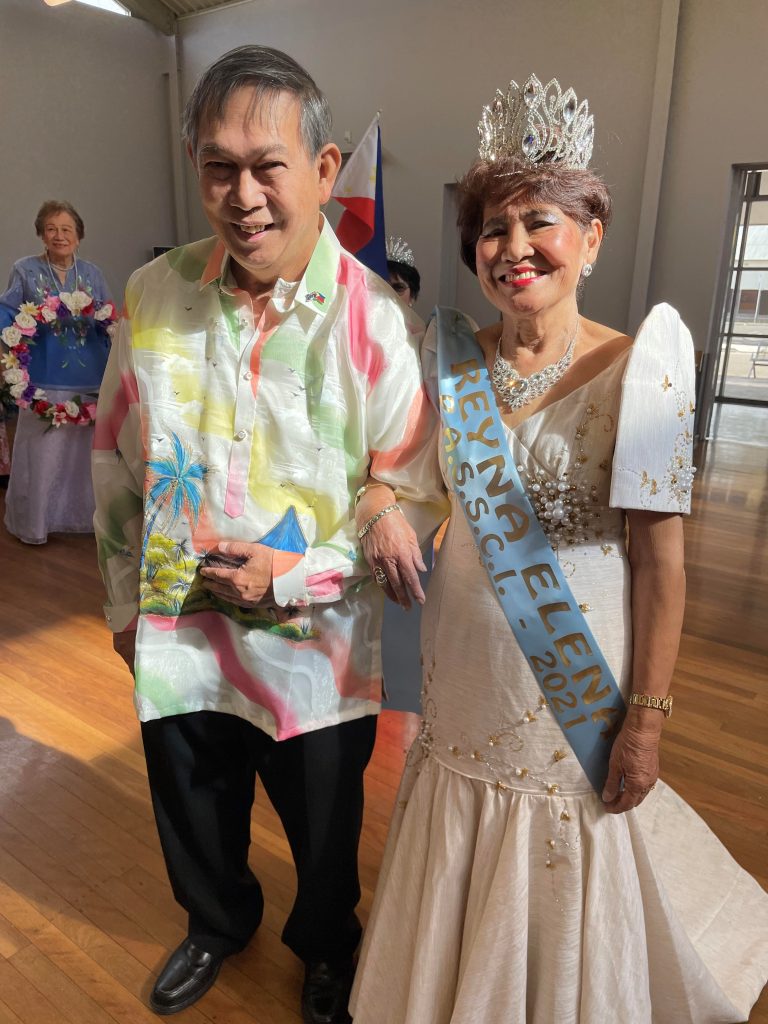From Renato Perdon collection of historical writings
The Philippine ‘barong’ for men’By Renato Perdon, Sydney, Australia
OVERSEAS , the ethnicity of migrants is almost always identified through their own languages, songs, food, personal surnames, and their traditional or native costumes. This is also true among Filipinos residing in other countries, as in Australia. Like other frontiers of foreign influences, however, this Filipino cultural symbol is not free from outside attribution.
As a matter of fact, in their colonial experience, Filipinos were able to synthesize foreign influences into distinct Filipino symbols.The Philippine national costumes are called ‘terno’, for the ladies, and ‘barong’, for men. They are products of varied cultural foreign designs, examples of integrating local and external elements. Over the years, both costumes have developed into unique symbols that identify the country of origin of Filipinos overseas, including those in Australia.The Philippine ‘barong’ for menAs a Filipino cultural symbol, the ‘barong’ for men has undergone major changes, too.
These were brought about by foreign influences, but the ‘barong’, since it first appeared in 1770, retains its elaborate design, a cool, lightweight, classic shirt appropriate for the tropics. The ‘barong’, originally worn by barrio officials during the Spanish colonial period, underwent radical changes in cut and materials, but it has always been a long-sleeved attire with cuffs and worn tucked out over a ‘camisa de chino’.
The ‘barong’ has a distinctive design and raised embroidery of varying richness on the half-open chest with buttons. It is normally made of ‘piña’, ‘jusi’, or ‘sinamay’. As a result of a later search for a better substitute, however, ‘ramie’ fibre (from a shrub abundant in the Philippines) has now been accepted as an alternative material for this national symbol. Since the early 1980s, ordinary Filipinos prefer ‘jusilyn’, a combination of cotton and polyester, for making the ‘barong’ because of its affordable cost and its crease-resistance.In the late 1960s, the ‘barong’ as formal attire, was tailored very much like a Western coat with wide lapels, pockets, and with wide button-less cuffs.
The only semblance to the traditional ‘barong’ was the fabric – a transparent fine ‘ramie.’ The early ‘barong’ was designed as long-sleeved attire, with a lower front uncut and the upper portion, or what is called the ‘pechera’, open and with buttons. Elaborate design was the distinction of the ‘pechera’.
The cuffs, too, had the same unusual designs and were fastened with cuff links that, among the moneyed, came in gold, silver, or costly stones.Jean Mallat, a French physician who worked for the San Juan de Dios Hospital in Intramuros, Manila, between 1840 and 1846, described the ‘barong’ as either plain or embroidered of ‘sinamay’ or ‘piña’ cloth and heavily starched. Mallat also recalled that the shirt reached below the knees and was always worn outside black or bluish silk pants.
The recent light coloured pants used by President Rodrigo Duterte for his ‘barong’ during hisinauguration departed from this combination. During the late 1880s, the ‘barong’ came in coat-form, made of much cruder fabric and less tailored. Then there was the variant ‘barong’ called ‘pinukpuk’. It was a collarless, long-sleeved shirt made of crude materials. A more radical modification of the ‘pinukpuk’ appeared briefly with a collar in a ruffled style. Despite this modification, however, the collarless ‘barong’ continued its popularity until the early 1890s.The ruffled collarless ‘barong’ preceded the coat-style design and more changes took place when the ruffled collar became plain and the ‘barong’ was worn outside the trousers over a ‘camisa de chino’ and under a European top coat. This style was made popular by sons of Filipino middle class families wh
o visited and studied in Europe during the mid-19th century.Soon the ‘cerrada’ or the close-necked ‘barong’ became fashionable and the buttons on the cuffs disappeared. The ruffled collar, with a more elaborate design, and the ruffled cuffs re-appeared in 1896. They were in vogue until 1920, when the most authentic design of the ‘barong’ appeared, and it was made of ‘rengue’ abaca fibre, as it is known today. It was worn over a ‘camisa de chino’ and had a design based on a half-open chest and a plain collar. This design and form lasted until the 1930s
. One criticism against the ‘barong’ is that it is easily wrinkled. Dante Ramirez, a well-known Manila fashion designer, said ‘it’s awful when we perspire and the shirt starts to show visible wrinkles or folds’. But nothing could be said against the ‘comfort and ease the wearer experienced even through the hottest of busiest days’, Ramirez added.More modern fashion ideas have influenced the design of the ‘barong.’
One of them was the Cardin-style ‘barong’ which was designed by French fashion designer Pierre Cardin in 1970. Cardin improvised the cuffs and the ‘pechera’ and made the body tapered. The new ‘barong’ look became very popular not only among Filipinos, but among international celebrities like world-reknown pianist Van Cliburn and Hollywood actor George Hamilton who wore their ‘barong’ during their sojourns in the Philippines.When American actor Gregory Peck visited Manila a few decades ago, he wore his delicately embroidered ‘barong’ tucked in under his black evening suit. He was a sensation among the members of the Manila high society.
It was acceptable because of his stature – an international celebrity experimenting with the local ‘haute couture’; otherwise, the ‘barong’ tucked in was unacceptable, even among the most Westernised Filipinos.During the late 1970s, at a diplomatic reception in Singapore, then Prime Minister Lee Kuan Yew was reported as greeting his guests wearing the ‘barong’. Observers were not surprised, knowing that Singapore has a similar climate year-round like Manila.
When then Australian Minister for Immigration Al Grassby visited Manila n 1974, he was presented with an embroidered ‘barong’. It created a sensation when Minister Grassby appeared in the Australian Parliament dressed in the elegant white Philippine ‘barong’ to vote in a division.
Because of international exposure, the ‘barong’ gained new patrons, mostly higher government officials and business executives, who started to wear the native attire in the new design and cut. Pitoy Moreno, a leading Filipino couturier at that time observed early in the 1980s that the ‘barong’ ‘has become a popular export commodity to European resorts’. It has been seen in New York, Madrid and Switzerland as a dress shirt. Thus, another decline in the use of the old-styled ‘barong’ took place.The popularity of the ‘barong’ as an official attire was started by Philippine President Ramon Magsaysay in the early 1950s and was enhanced during the Marcos era when President Marcos himself was always seed wearing the ‘barong’. He was pictured wearing the ‘barong’ in his daily round of government commitments, including official receptions in honour of foreign guests and dignitaries.
More than two decades of the Marcos administration brought the ‘barong’ to the forefront of Filipino ‘haute couture.’ It was recognised as official and practical attire in a tropical climate. To Filipino diplomats, who followed the example of President Marcos, the ‘barong’ became ‘de rigueur’ at the many official functions attended by them as ambassadors and ministers overseas. As a matter of fact, many of them were in their best ‘barong’ when they presented their credentials to receiving foreign governments.
During the 1996 APEC meeting held in Subic Bay, Philippines, leaders from the 19-member APEC forum turned up for their annual trade summit in ‘barong’, the traditional Philippine shirt. The see-through ‘barong’ shirts worn by the leaders were embroidered with designs based on Philippine window architecture and geometric shapes of rice paddies to represent APEC as a window on the Asia-Pacific region.
Many of the world leaders were comfortable with their shirt. No less than US President Bill Clinton described the attire as ‘cool and airy’.Today, unlike other Filipino cultural symbols such as the ‘terno’ and the regional costumes which are used mainly during formal or semi-formal occasion hosted by the government, the ‘barong’ has become an almost everyday article of clothing of business executives and government officials and employees in the Philippines.
The significance of the ‘barong’ as a cultural symbol is therefore not lost. This could be the reason why Felice Santa Maria, an authority on Filipino culture, regarded the ‘barong’ as ‘proof of a courageous and creative ancestry.’From ‘Footnotes to Philippine History’ by Renato Perdon, Manila Prints, Sydney, Australia (2008)













Leave a Reply